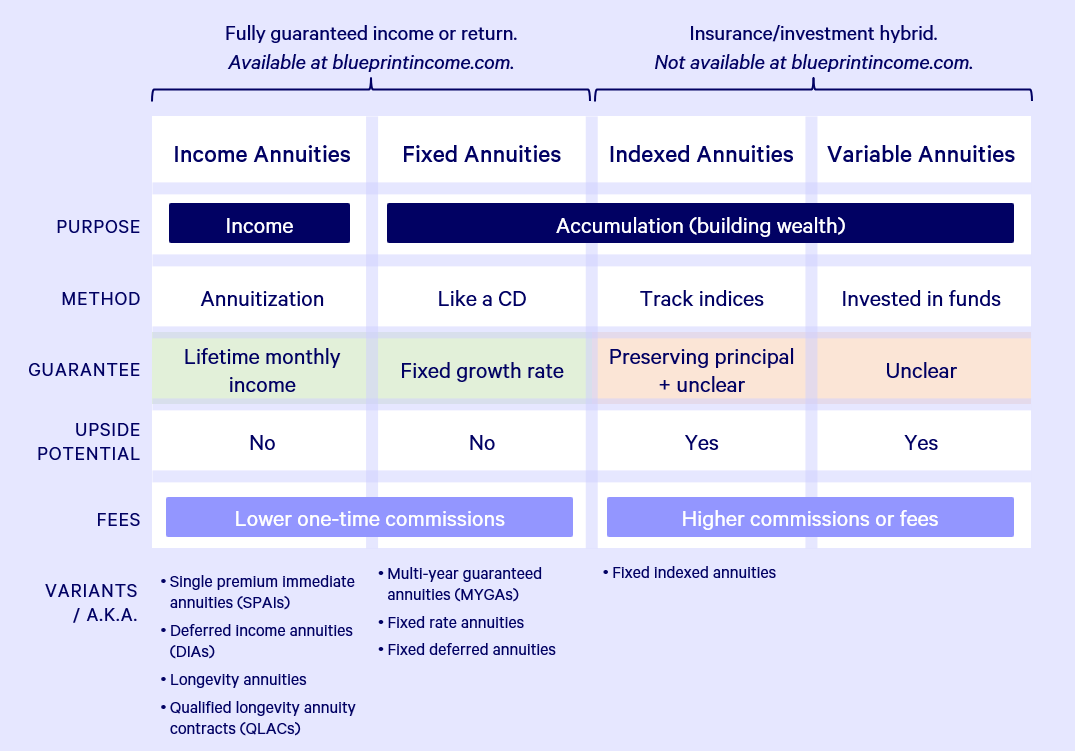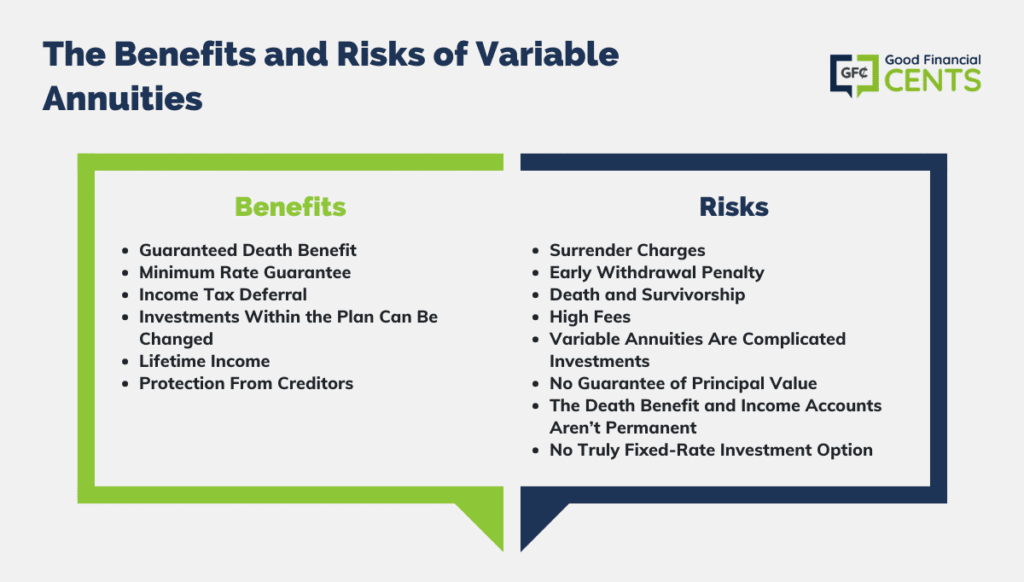All Categories
Featured
Table of Contents
Just as with a taken care of annuity, the owner of a variable annuity pays an insurance provider a lump amount or collection of repayments in exchange for the pledge of a collection of future payments in return. As stated above, while a taken care of annuity expands at an assured, continuous price, a variable annuity expands at a variable rate that depends upon the efficiency of the underlying investments, called sub-accounts.

Throughout the build-up stage, assets purchased variable annuity sub-accounts expand on a tax-deferred basis and are taxed just when the agreement owner takes out those incomes from the account. After the accumulation phase comes the income stage. Gradually, variable annuity possessions should theoretically enhance in worth up until the agreement proprietor chooses she or he wish to start withdrawing cash from the account.
The most substantial problem that variable annuities generally present is high cost. Variable annuities have several layers of costs and expenditures that can, in aggregate, produce a drag of up to 3-4% of the agreement's worth each year.
Exploring the Basics of Retirement Options Key Insights on Your Financial Future Breaking Down the Basics of Investment Plans Benefits of Choosing the Right Financial Plan Why Choosing the Right Financial Strategy Can Impact Your Future How to Compare Different Investment Plans: How It Works Key Differences Between Different Financial Strategies Understanding the Key Features of Long-Term Investments Who Should Consider Fixed Index Annuity Vs Variable Annuities? Tips for Choosing the Best Investment Strategy FAQs About Pros And Cons Of Fixed Annuity And Variable Annuity Common Mistakes to Avoid When Planning Your Retirement Financial Planning Simplified: Understanding Fixed Annuity Vs Variable Annuity A Beginner’s Guide to Choosing Between Fixed Annuity And Variable Annuity A Closer Look at Immediate Fixed Annuity Vs Variable Annuity
M&E expense charges are calculated as a percentage of the contract value Annuity companies pass on recordkeeping and other administrative prices to the agreement proprietor. This can be in the kind of a level yearly fee or a portion of the contract value. Management fees might be consisted of as component of the M&E risk fee or may be assessed individually.
These costs can vary from 0.1% for easy funds to 1.5% or more for actively managed funds. Annuity agreements can be personalized in a variety of means to offer the details requirements of the agreement proprietor. Some common variable annuity cyclists include assured minimum build-up advantage (GMAB), ensured minimum withdrawal benefit (GMWB), and assured minimum income advantage (GMIB).

Variable annuity payments supply no such tax obligation deduction. Variable annuities tend to be extremely inefficient cars for passing wide range to the future generation due to the fact that they do not enjoy a cost-basis change when the original agreement owner passes away. When the proprietor of a taxed financial investment account passes away, the expense bases of the investments held in the account are adjusted to mirror the marketplace prices of those financial investments at the time of the owner's fatality.
Highlighting Fixed Vs Variable Annuity Pros And Cons Key Insights on Fixed Vs Variable Annuity Defining Fixed Income Annuity Vs Variable Growth Annuity Benefits of Choosing the Right Financial Plan Why Retirement Income Fixed Vs Variable Annuity Is a Smart Choice Immediate Fixed Annuity Vs Variable Annuity: Explained in Detail Key Differences Between Different Financial Strategies Understanding the Key Features of Long-Term Investments Who Should Consider Variable Vs Fixed Annuities? Tips for Choosing Annuities Variable Vs Fixed FAQs About Fixed Vs Variable Annuity Pros Cons Common Mistakes to Avoid When Planning Your Retirement Financial Planning Simplified: Understanding Immediate Fixed Annuity Vs Variable Annuity A Beginner’s Guide to Smart Investment Decisions A Closer Look at How to Build a Retirement Plan
Successors can acquire a taxed financial investment profile with a "tidy slate" from a tax obligation perspective. Such is not the case with variable annuities. Investments held within a variable annuity do not receive a cost-basis adjustment when the original proprietor of the annuity dies. This means that any kind of accumulated latent gains will be passed on to the annuity proprietor's heirs, in addition to the connected tax obligation problem.
One substantial concern associated to variable annuities is the potential for disputes of interest that might feed on the part of annuity salesmen. Unlike a monetary advisor, who has a fiduciary duty to make financial investment choices that benefit the customer, an insurance policy broker has no such fiduciary commitment. Annuity sales are very financially rewarding for the insurance experts who sell them as a result of high ahead of time sales compensations.

Lots of variable annuity contracts include language which places a cap on the portion of gain that can be experienced by certain sub-accounts. These caps avoid the annuity owner from fully joining a section of gains that might otherwise be enjoyed in years in which markets generate substantial returns. From an outsider's perspective, it would seem that capitalists are trading a cap on investment returns for the previously mentioned ensured flooring on investment returns.
As noted above, surrender costs can badly limit an annuity proprietor's capacity to move properties out of an annuity in the very early years of the agreement. Better, while many variable annuities enable contract proprietors to take out a defined quantity during the buildup stage, withdrawals yet amount usually result in a company-imposed fee.
Withdrawals made from a set rate of interest financial investment option can additionally experience a "market price modification" or MVA. An MVA readjusts the value of the withdrawal to reflect any type of adjustments in rate of interest from the moment that the money was bought the fixed-rate choice to the time that it was taken out.

Quite frequently, also the salesmen that market them do not fully recognize exactly how they function, and so salespeople in some cases take advantage of a buyer's emotions to offer variable annuities instead of the advantages and viability of the products themselves. We think that capitalists ought to totally comprehend what they have and just how much they are paying to possess it.
Exploring the Basics of Retirement Options A Closer Look at Fixed Index Annuity Vs Variable Annuities Defining the Right Financial Strategy Benefits of Choosing the Right Financial Plan Why Variable Vs Fixed Annuity Is Worth Considering How to Compare Different Investment Plans: Simplified Key Differences Between Different Financial Strategies Understanding the Rewards of Deferred Annuity Vs Variable Annuity Who Should Consider Immediate Fixed Annuity Vs Variable Annuity? Tips for Choosing the Best Investment Strategy FAQs About Fixed Vs Variable Annuities Common Mistakes to Avoid When Planning Your Retirement Financial Planning Simplified: Understanding Your Options A Beginner’s Guide to Fixed Vs Variable Annuity A Closer Look at Choosing Between Fixed Annuity And Variable Annuity
Nevertheless, the exact same can not be claimed for variable annuity possessions held in fixed-rate investments. These assets lawfully belong to the insurance provider and would certainly consequently go to danger if the firm were to fall short. Any type of assurances that the insurance coverage business has concurred to provide, such as an ensured minimum revenue benefit, would be in question in the occasion of a company failing.
Possible purchasers of variable annuities must understand and take into consideration the financial condition of the issuing insurance coverage company before getting in into an annuity contract. While the benefits and drawbacks of various sorts of annuities can be questioned, the real issue surrounding annuities is that of suitability. In other words, the inquiry is: who should have a variable annuity? This inquiry can be challenging to respond to, offered the myriad variants available in the variable annuity universe, but there are some fundamental standards that can aid investors make a decision whether or not annuities ought to play a role in their economic plans.
Nevertheless, as the saying goes: "Customer beware!" This article is prepared by Pekin Hardy Strauss, Inc. Best annuities for long-term planning. ("Pekin Hardy," dba Pekin Hardy Strauss Riches Administration) for informational objectives just and is not intended as an offer or solicitation for organization. The info and information in this short article does not constitute legal, tax obligation, accounting, financial investment, or other professional guidance
Table of Contents
Latest Posts
Exploring Fixed Vs Variable Annuity A Closer Look at Deferred Annuity Vs Variable Annuity Defining the Right Financial Strategy Advantages and Disadvantages of Different Retirement Plans Why Choosing
Decoding How Investment Plans Work Key Insights on Fixed Annuity Or Variable Annuity Defining Variable Vs Fixed Annuity Advantages and Disadvantages of Tax Benefits Of Fixed Vs Variable Annuities Why
Analyzing Strategic Retirement Planning Key Insights on Your Financial Future Breaking Down the Basics of Investment Plans Pros and Cons of Various Financial Options Why Variable Vs Fixed Annuities Ca
More
Latest Posts